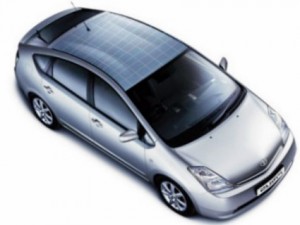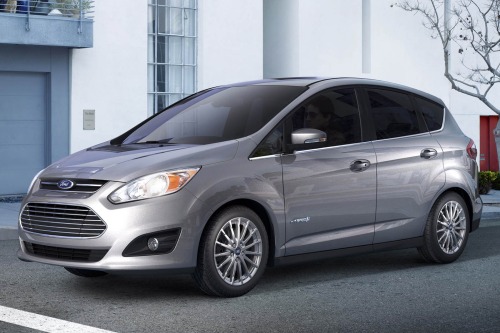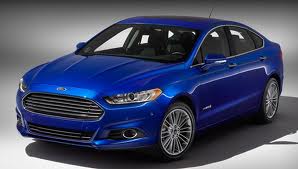One day, back in 2009, while driving my ’99 Chevy Malibu home from classes in Marleboro College’s MBA in Managing for Sustainability, I set a target for my next car that it would get over 45 Miles Per Gallon. That basically means a hybrid like the Ford CMax (Edmunds / Ford) pictured above or one of the uber-efficient Volkswagon TDI Clean Diesel (news / autoblog / VW).
Tag Archives: Prius
Is Ford Motor Co Sustainable? And is Ford a Value Investment?
Back in October, 2007, I wrote about the Toyota Prius and the GM Hummer in Prius v Hummer, the Battle for the Streets and the Prius v Hummer, the Battle for the Brains. (Spoiler alert – the Prius won). Now I’m thinking about Ford Motor Company. A few years back their tag line was “Ford Has A Better Idea.” That may not be the current tag line, but I think it is the case. I will go further and say that Ford is on the road to being Sustainable car company, and is a Value Investment.
While Toyota deserves credit for developing the hybrid- the Prius was introduced in 2000 – Ford has an extensive lineup of hybrids and is putting the EcoDrive – which boosts mileage by 20% – on vehicles, from small cars to the F150 truck. And 40% of the F150′s sold today are sold with the EcoDrive engine. Continue reading
Toyota Recalls and the Dept of Transportation
“Safety is our No. 1 priority when it comes to planes, trains and automobiles,” said Dept. of Transportation Secretary, Ray LaHood, in his interview with George Stephanopoulos on ABC News 2/10/10. Secretary LaHood also said,
“I’ve been in this job a little over a year. On my watch, we have not been asleep at the switch when it comes to Toyota.
“There are three recalls going on right now, two of them as a result of our people either going to Japan or me on the telephone with the president of Toyota holding their feet to the fire on this.”
Stephanopoulos also rolled tape of Joan Claybrook, who served as head of the National Highway Traffic Safety Administration under President Carter, alleging that some of the problems at Toyota were known before 2007. While Secretary LaHood did not openly criticize the DoT under the Bush Administration, he made it clear that the DoT in the Obama Administration is focused on safety.
“We feel a strong obligation to the driving public … to make sure that every car is safe. … We are holding Toyota’s feet to the fire to make sure that every car is safe.”
Links:
Solar Power Enhanced Prius

Solar Prius
Toyota solves the micro-greenhouse effect of the sun heating a parked car, in the Prius III. The new Prius has a Photovoltaic Solar option. The PV Solar Modules, from Kyocera, power the air conditioner and fan to keep the car cool when it is parked on a hot sunny day. In this generation of the car, the PV Modules will only power the air conditioning system; they will not charge the batteries or the transmission. That, however, may be coming. While it’s expensive, and perhaps more whiz-bang than practical, which can perhaps be said for things like radios, cd players, MP3 players, automatic transmissions, air conditioning, heat – in short everything but the engine, transmission, wheels, seats, doors, and windows, it’s a very cool whiz-bang feature. More observations at the Environment Blog
.
According to Rory Reid, at CNET ,
“By using a combination of a solar panel and an electric motor, Toyota is able to use the power of the sun against itself, save gas, and reduce carbon dioxide emissions.
“It’s a shame that these particular solar panels can’t be used to power the entire vehicle, but there is hope: A U.S. company called SEV has already demonstrated a modified, solar-powered Prius that improves fuel economy by about 29 percent. According to SEV, this gives you a daily electric-only range of 20 miles.”
As Dylan said, “The times, they are a-changing.” This is a step in the direction of a plug-in solar and bio-diesel powered car.
Wired Gets It Wrong – Nuclear Power is Not Good For the Planet
Spencer Reiss, writing inWired Magazine says “Nuclear Power is The Most Climate Friendly Insdustrial Scale Form of Energy “. Forgetting for a moment that nuclear power requires fuel, waste management, national security infrastructure, massive government subsidies, including artificial limits to liability, nuclear releases tremendous amounts of heat into the environment, and new nuclear are estimated to cost about 2 to 4 times the price of new wind facilities, without cost overruns (and cost overruns are a given with nuclear power plants) and take 10 to 12 years.
The climate friendly industrial scale forms of energy are Solar, Offshore Wind,large scale Marine Kinetic –tapping the Gulf Stream, Deep Geothermal, CoGen, and the NegaWatts available via conservation. Just as a screw can propel a ship thru the water, a screw anchored to the ocean floor will spin because of currents, and can power turbines. Marine Current Turbines, Ltd., based in Bristol, England has just completed the world’s first megawatt scale tidal/marine current driven power plant in the Strangford Narrows in Northern Ireland. If with wind, the sky’s literally the limit, with MCT the sea’s the limit. Geothermal exploits temperature differentials for heating and cooling. Deep Geothermal
would use the earth’s heat in abandoned mines and wells to generate steam for industrial process power. Recycled Energy Development, RED
, of Westmont, Il does CoGen. REDcaptures industrial waste energy to produce electricity and thermal power, often without burning any additional fuel or emitting any additional pollution. For industrial partners, RED reduces energy costs substantially, increases reliability, and offers the opportunity for emissions credits. Akeena, Evergreen Solar, First Solar
, Sunpower, World Water and Solar, and Vestas Wind are old news. Ausradevelops and deploys utility-scale solar thermal technologies to serve global electricity needs in a dependable, market competitive, environmentally responsible manner.
Wired Magazinealso published a companion piece by Matt Power that says “Pound for pound, making a Prius contributes more carbon to the atmosphere than making a Hummer” (click here). The fallacy here is that they forget to mention that a Hummer weighs about three times more than a Prius, so to have an honest statistic you need to compare 3 pounds of Hummer to each pound of Prius. They do note that the operating efficiency of the Prius outweighs any manufacturing inefficiency. And they point out that it is better for the planet to buy a used car than a new car.


